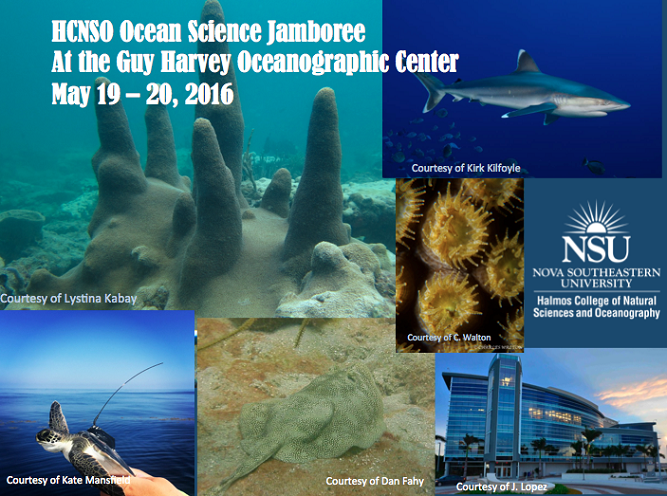Reproductive Ecology Of Dragonfishes (Family: Stomiidae) In The Gulf Of Mexico
Location
Guy Harvey Oceanographic Center Facility
Start
5-20-2016 9:15 AM
End
5-20-2016 9:30 AM
Abstract
Dragonfishes (Family: Stomiidae) are dominant mesopelagic predators occurring throughout the world’s oceans. Dragonfishes are ecologically important because they are trophic mediators, preying primarily upon lanternfishes, which are major zooplanktivores. While aspects of dragonfish feeding ecology have been quantified, little is known regarding their reproductive ecology. A key reason is insufficient sample sizes of mature adults due to the type of gear used; larger, sexually mature stomiid adults are more adept at net avoidance. Between 2010-2011, the Offshore Nekton Sampling and Analysis Program was initiated in the northern Gulf of Mexico over all four seasons using a discrete-depth sampling system and a large, commercial-sized midwater trawl. Gonads were dissected from 714 individuals belonging to 47 species of stomiids, of which 12 were dominant and subjected to detailed analysis. All species except Chauliodus sloani had sex ratios that did not significantly differ from the expected 1:1 ratio (male:female). Aristostomias xenostoma and Photostomias guernei were the only species in which the biomass ratio favored males. Female ovaries possessed an asynchronous oocyte development, suggesting that females are iteroparous batch spawners and able to spawn more than once each spawning season, or continuously throughout the year with no spawning season. Males exhibited a similar pattern. Data on size at maturity and length frequency distributions will be presented. Data such as these are essential for ecosystem-based modeling of global deep-pelagic ecosystems, which contain the overwhelming majority of earth’s fish biomass.
Reproductive Ecology Of Dragonfishes (Family: Stomiidae) In The Gulf Of Mexico
Guy Harvey Oceanographic Center Facility
Dragonfishes (Family: Stomiidae) are dominant mesopelagic predators occurring throughout the world’s oceans. Dragonfishes are ecologically important because they are trophic mediators, preying primarily upon lanternfishes, which are major zooplanktivores. While aspects of dragonfish feeding ecology have been quantified, little is known regarding their reproductive ecology. A key reason is insufficient sample sizes of mature adults due to the type of gear used; larger, sexually mature stomiid adults are more adept at net avoidance. Between 2010-2011, the Offshore Nekton Sampling and Analysis Program was initiated in the northern Gulf of Mexico over all four seasons using a discrete-depth sampling system and a large, commercial-sized midwater trawl. Gonads were dissected from 714 individuals belonging to 47 species of stomiids, of which 12 were dominant and subjected to detailed analysis. All species except Chauliodus sloani had sex ratios that did not significantly differ from the expected 1:1 ratio (male:female). Aristostomias xenostoma and Photostomias guernei were the only species in which the biomass ratio favored males. Female ovaries possessed an asynchronous oocyte development, suggesting that females are iteroparous batch spawners and able to spawn more than once each spawning season, or continuously throughout the year with no spawning season. Males exhibited a similar pattern. Data on size at maturity and length frequency distributions will be presented. Data such as these are essential for ecosystem-based modeling of global deep-pelagic ecosystems, which contain the overwhelming majority of earth’s fish biomass.


